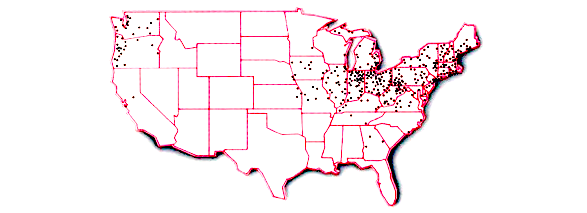Scenarios of a very near future: If Fido and Rover jump the backyard fence, their collars send off an SMS message. When motion is detected around the house, photos are snapped and saved to Dropbox. If the baby awakes, her cry triggers whatever kind of alert you choose.
These promises of superconnectivity are the types of scenarios on offer from personal sensor hardware companies Twine, SmartThings, and Ninja Blocks, all of which recently gained six- or seven-figure funding on Kickstarter.
If This Then That (IFTTT), the “digital duct tape” that offers simple recipes for connecting Craigslist to Evernote to email and 50+ other digital channels, is also moving into the physical world of personal sensors, and in December announced $7 million in funding.
As I’ve followed these developments, I’ve bounced between a couple of different responses.
The optimist in me recalls Sheldon Renan’s concept of netness, with its principle that, “The more things are connected (able to communicate) the better things work.”
On the other hand, there’s Evgeny Morozov: “I worry that as the problem-solving power of our technologies increases, our ability to distinguish between important and trivial or even non-existent problems diminishes,” (from this piece, his response to this year’s Edge question).
What I think is trivial about these stories — the scenarios described by Twine, SmartThings, and Ninja Blocks — is that they are all pitched as private goods. They help out with my dogs, my house, my baby; they are amazing technologies that offer private benefits. Maybe that’s just the type of marketing that works on Kickstarter. Or maybe when these devices are more broadly available, creative types will use them to support the larger public good.
Here’s one such story.
Leif Percifield was concerned about combined sewer overflows in New York City and, using Arduino and Pachube (now Cosm) technologies, he patched together a sensor system for sending twitter and SMS alerts whenever overflows occur.
As described on Percifield’s website, DontFlush.Me:
The idea behind this project is to allow NYC residents to help reduce the amount of pollution in the harbor. Some 27 billion gallons of raw sewage is dumped into the harbor every year. This comes from Combined Sewer Overflows (CSOs) that open when the sewer system is overloaded. The idea is to enable residents to understand when the overflows happen and reduce their wastewater production before and during an overflow event.
From an article by Philip Silva in The Nature of Cities blog:
The reasoning behind DontFlush.Me is elegantly simple: if New Yorkers knew exactly when an overflow was underway, they’d think twice about loading the dishwasher, taking a long shower, or, even, flushing the toilet. Its the old “let it mellow” logic, with a twist. Once the overflow is over, city dwellers will get the “all clear” to flush once again.
According to the EPA, combined sewer systems serve roughly 40 million people in over 750 towns and cities around the U.S. Here’s the EPA map:



Another cautionary secondary effect of widespread networked sensors is surveillance. A high level version of “netness” is being considered/developed by the EU in a project with the somewhat Orwellian name “Guardian Angels.” Take a look at the website for the project http://www.ga-project.eu/ . In a project that envisions benefits of “wearable, miniaturized and wireless sensors”, the potential consequences for the “surveillance society” are substantial.